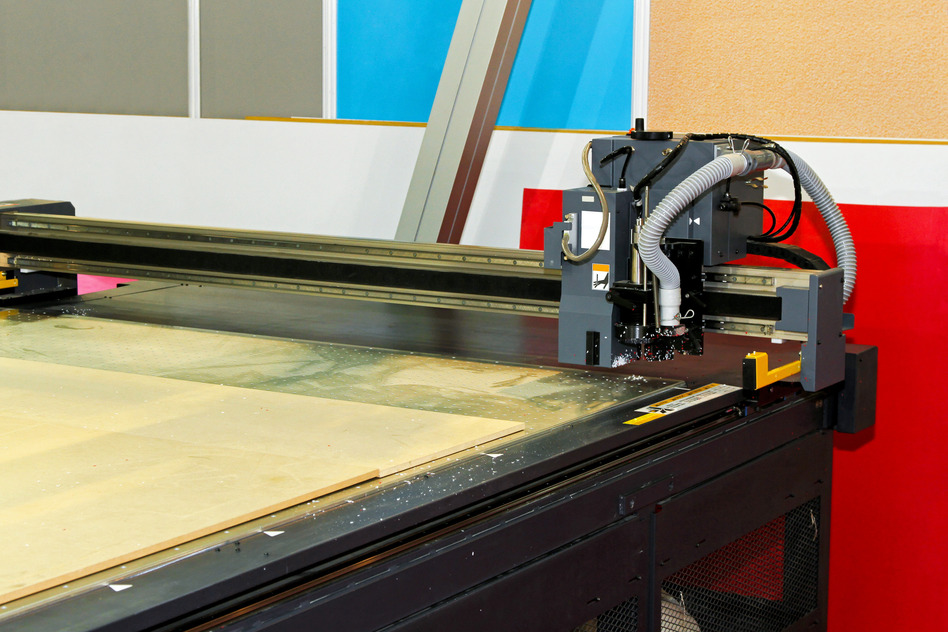We may receive a commission when you use our affiliate links. However, this does not impact our recommendations.

CNC routers have been used in commercial woodworking for years, and now they’re making their way into hobbyist shops.
Some woodworkers just don’t believe in using CNC routers. They believe that someone who cuts and shapes parts with a CNC router is not a craftsman, and has little or no connection with the materials he or she uses. As someone who began his woodworking career with a strong interest in hand tools, I can understand this point of view. However, my time in the woodworking industry has taught me that proficiency with CNC routers requires more creativity and skill than most people probably realize.
No matter what tool you use to cut or shape a piece of wood, you need to know how the material is going to respond. When you’re cutting end grain, you’re going to tear out the back edge of it whether you use a handheld router, hand plane or a CNC. You need to clamp a block behind your board, chamfer the back edge or take some other action to prevent this tear out.
CNC routers cut solid wood just like portable routers and hand planes. They need to take shallow cuts and multiple passes. Setting a machine’s feed rate too low will result in burns, and setting it slightly too high will give you chatter. When a cut is too deep, a CNC router bit can break. Bit selection is also important, and you need to be able to choose from options like single-flute, straight flute, spiral flute, up-cut, down-cut and compression.
Work holding on a CNC can be a real challenge. Most commercial machines use vacuum systems to keep work pieces in place, with somewhat inconsistent results. If a part is too small, the vacuum won’t hold it. Operators need to know how to build jigs for these situations and how to accommodate them in CNC programs. Hobby machines usually rely on clamps or fasteners for work holding, and knowing how to arrange them, as well as how to program a machine to avoid routing into them requires skill.
Programming a CNC machine is an ability that takes time to master. You can learn the basic G Code commands that control a machine very quickly and use them to create simple parts. However, to really exploit a CNC’s capabilities, you’ll need to learn some kind of CAM software. Once you do, you can cut intricate 3D shapes and ornate carvings.
If you’re interested in learning to use CNC routers for your woodworking projects but are a little intimidated after reading the above, don’t be. Learning to work with CNCs is just like learning to work with hand tools; once you know your material and a few basic skills, you’ll be able to complete some simple projects. With practice, you’ll be able to do more advanced work. The real fun of CNC is in the learning process: exploring the code that drives the machine, using the software and figuring out how to hold difficult work pieces. I can tell you from experience that this process can be one of the most exciting and rewarding parts of your woodworking.
You can build your own CNC router for woodworking. Take Nick’s Popular Woodworking University course, Build a CNC Router. You’ll get a parts list, step by step instructions, a SketchUp model and dimensioned drawings.
Here are some supplies and tools we find essential in our everyday work around the shop. We may receive a commission from sales referred by our links; however, we have carefully selected these products for their usefulness and quality.









I run a production shop. A CNC is central to our ability to produce beautiful work cost effectively for our customers. It is a tool, like all the other tools, both powered and hand, in my shop. The amount of skill required to use a CNC properly is at least as great as any other tool I own. I design much of the art we produce on our machine, and I defy anyone to tell me that what I produce doesn’t represent craftsmanship. My customers don’t care if a bit or a chisel produced the contours on the wood.
The “Build a CNC Router” course description list the dimensions of the finished machine, what I would like to know is what is the maximum length and width it can handle with no special stock manipulation (like sliding a longer piece down) . Can it work all sides of a quarter sheet of plywood or MDF, for example.
You can take an experienced programer a CNC annd a carving pattern and he can carve the carving…………….no chisel time at all………….THIS IS NOT A WOOD SHOP TOOL IT IS A CRUTCH.PERIOD>>NO REPLY NEEDED.
I totally agree! I’m a mechanical engineer, and I’ve used a CNC on my fair share of projects. If you don’t know what you’re doing you can find yourself in a bad spot really quickly with one of these! It’s an art in and of itself, just ask any machinist.
I have used CnC machines (shop Bot)for a few tasks, primarily for making forms for bent lamination projects.